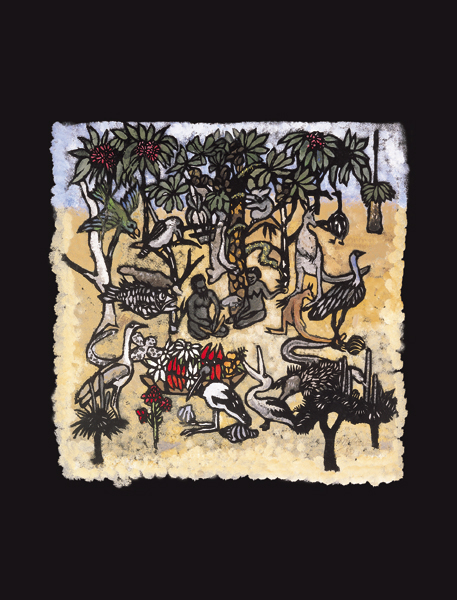Image Details

Art Gallery of New South Wales
Cracking coconuts, Adam and Eve appear as aborigines in this gouache stencil by Australian artist Margaret Preston (1875–1963). Authors Frederic Pryor and Eleanor Beach point out that the biblical story of the expulsion of Adam and Eve from Eden has parallels in contemporary anthropological theories regarding the development of societies. Recent studies refute earlier theories that humans evolved from hunting/gathering societies to farming/herding societies as a result of a revolutionary technological advance; it now appears that the earliest peoples knew about agriculture but lived by gathering while food was plentiful. Increases in population density, over-gathering or climatic changes may have forced early peoples to make use of agricultural techniques they already understood but had little need for previously, according to Pryor and Beach. Recent studies also question the notion that herding preceded agriculture; it now appears that growing and herding arose simultaneously.
This chronology is consistent with the biblical text. Adam and Eve, provided with “every plant yielding seed…and every tree with seed in its fruit” (Genesis 1:29), initially resemble gatherers—as shown in Preston’s painting, where they content themselves with native Australian fruits. Later, after their expulsion from Eden, they earn a more meager living growing their food; and their children, Abel and Cain, become, respectively, the “keeper of the sheep” and the “tiller of the ground” (Genesis 4:2).
